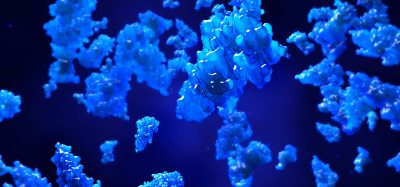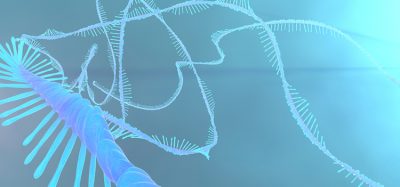Study identifies new brain death pathway in Alzheimer’s disease
Posted: 24 July 2017 | Dr Zara Kassam (Drug Target Review) | 1 comment
Evidence that the activation of a biological pathway necroptosis is closely linked with Alzheimer’s…

First of its kind study may lead to new era of Alzheimer’s drug discovery and therapeutic targets. Evidence that the activation of a biological pathway necroptosis, which causes neuronal loss, is closely linked with Alzheimer’s severity, cognitive decline and extreme loss of tissue and brain weight that are all advanced hallmarks of the disease.
In a new study published today, Arizona State University-Banner Health neuroscientist Dr Salvatore Oddo and his colleagues from Phoenix’s Translational Genomics Research Institute (TGen) – as well as the University of California, Irvine, and Mount Sinai in New York – have identified a new way for brain cells to become fated to die during Alzheimer’s diseases.
“We anticipate that our findings will spur a new area of Alzheimer’s disease research focused on further detailing the role of necroptosis and developing new therapeutic strategies aimed at blocking it,”said Dr Oddo.
Necroptosis, which causes cells to burst from the inside out and die, is triggered by a triad of proteins. It has been shown to play a central role in multiple sclerosis and Lou Gehrig’ disease, and now for the first time, also in Alzheimer’s disease.
“There is no doubt that the brains of people with Alzheimer’s disease have fewer neurons,” said Dr Oddo. “The brain is much smaller and weighs less; it shrinks because neurons are dying. That has been known for 100 years, but until now, the mechanism wasn’t understood.”
Links with Alzheimer’s
Necroptosis was first identified as a result of inflammation, a common malady in Alzheimer’s. Three critical proteins are involved in the initiation of necroptosis, known as RIPK1, RIPK3 and MLKL. The study describes a key event in the process of necroptosis when RIPK1 and RIPK3 form a filamentous structure known as the necrosome.
The formation of the necrosome appears to jump-start the process of necroptosis. It activates MLKL, which affects the cell’s mitochondria, eventually leading to cell death. Dr Winnie Liang, TGen assistant professor, director of TGen Scientific Operations and director of TGen’s Collaborative Sequencing Centre, said MLKL executes necroptosis to ultimately cause cell death.
“In this study, we show for the first time that necroptosis is activated in Alzheimer’s disease, providing a plausible mechanism underlying neuronal loss in this disorder,” said Dr Liang, who contributed to the study’s gene expression analyses.
To explore necroptosis, the research team utilised multiple cohorts of human samples obtained from the Brain and Body Donation Program at the Banner Sun Health Research Institute and Mount Sinai VA Medical Centre Brain Bank. First, they measured RIPK1, RIPK3 and MLKL in a specific region of the brain that is typically ravaged by cell loss during the advance of Alzheimer’s disease – the temporal gyrus. Results showed that during necroptosis, these markers were increased in the brains of people with Alzheimer’s disease.
Next, they identified the molecular cascade of necroptosis activation, with RIPK1 activating RIPK3 by binding with it. This protein complex then binds to and activates MLKL. Analysis of mRNA and protein revealed elevated levels of both RIPK1 and MLKL in the post-mortem brain tissues of patients with Alzheimer’s when compared with normal post-mortem brains.
Furthermore, they also demonstrated that necroptosis activation correlated with the protein tau. Intriguingly, necroptosis did not appear to be linked with the other chief physiological characteristic of Alzheimer’s pathology, beta-amyloid plaque.
Engines of decline
To assess the relationship between necroptotic protein levels and cognitive health, the study revisited the scores of patients whose post-mortem brain tissue was evaluated for necroptosis. Results showed a significant association between RIPK1, MLKL and diminished scores on the Mini-Mental State Examination (MMSE), a widely used test measuring cognitive health.
Given the established relationship between necroptosis and Alzheimer’s pathology, including cell loss and attendant cognitive deficit, the study sought to inhibit the process to study the dynamic effects on cell death and memory loss.
With such experiments not possible in people, the team demonstrated in a mouse model of the disease that lowering the activation of the necroptosis pathway reduces cell loss and improves performance in memory-related tasks, offering new hope for human therapeutics to halt or reverse the effects of Alzheimer’s.
The results reveal that the inhibition of necroptosis activation through the blockage of RIPK1 prevents cell loss in mice. Compellingly, mice with inhibited activation of necroptosis pathways performed significantly better in tests of spatial memory involving navigation through a water maze.
New understanding, new hope
The study opens a new window on Alzheimer’s research and offers hope for therapies targeting cell loss in the brain, an inevitable and devastating outcome of Alzheimer’s progression.
Dr Oddo stressed that RIPK1, RIPK3 and MLKL are among many potential drug targets, and others will likely follow as the links between necroptosis and Alzheimer’s become clearer. While multiple causes of the disease are likely, understanding more clearly all targets that trigger disease will offer the best hope since neuronal loss has been found in people more than a decade before any symptoms of dementia said Dr Oddo.
“One may not agree as to which molecules trigger Alzheimer’s disease, ” said Dr Oddo, “but everybody agrees that the end result is the neuronal loss. If you can prevent that you may have a beneficial effect.”
Related topics
Drug Discovery
Related conditions
Alzheimer’s disease
Related organisations
Arizona State University, Brain and Body Donation Program at the Banner Sun Health Research Institute, California University, Phoenix's Translational Genomics Research Institute (TGen), UC Irvine
Related people
Dr Salvatore Oddo, Dr Winnie Liang








Now the question is what are the causes of RIP K1-3 complex activation, and more it happen casually in single neurons or in specific cognitive/ motor cells ?